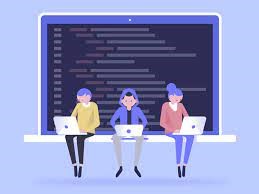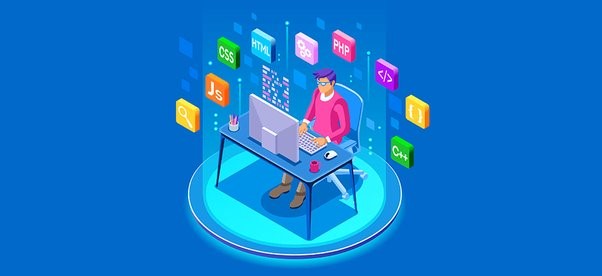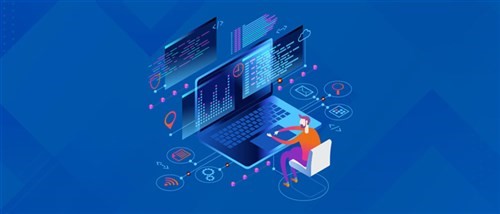Article Start
By 2024, the demand for full-stack developers will be at an all-time high. As more web development firms go online and adopt cutting-edge technology, they will need the expertise to handle everything from design and front-end development to back-end coding and database management.
Many of us get r the programming and web development field knowing only one or two technologies, such as C++, JavaScript, or Java, but this is no longer sufficient.
It’s important to stay up-to-date on the newest technologies and frameworks to be one of the most in-demand developers in your field. This article looks at the top 10 full-stack developer frameworks you need to know.
What is Full Stack Framework?

A full-stack development framework is a collection of technologies that provides a complete end-to-end web development solution. The term “full stack” refers to a framework containing all the tools needed to create a web application, from the front-end user interface to the back-end database.
While several different full-stack frameworks are available, they all share crucial features such as a web server, an application server, and a database. Furthermore, most full-stack frameworks provide several tools for creating, testing and deploying web applications.
Top 10 Full Stack Developer Frameworks in 2024

Any web development companies in california will tell you there is an ongoing discussion about the best development frameworks. However, a few frameworks stand out above the others when it comes to full-stack development. This section will examine the best full-stack developer frameworks.
1. Node JS and Express.js
Node JS is a runtime environment for JavaScript that allows developers to run JavaScript on the server side. Express.js is a web application framework with powerful functionality for developing online apps. When these two technologies are combined, the MEAN Stack is formed. As MEAN Stack, users can create apps rapidly and easily utilizing JavaScript. They have a rich collection of features and libraries that provide high speed and scalability.
2. Angular (JavaScript Framework)
There are other alternative full-stack developer frameworks. However, Angular is one of the most popular. Angular is a Google open-source framework for developing single-page web applications. One advantage of using Angular is that it uses TypeScript, a JavaScript superset that may be used to improve code.
Furthermore, Angular includes several tools that help accelerate and simplify development, such as an automated form validation system. It’s no wonder that Angular is a top full-stack framework.
-
React JS (Javascript Library)
Full Stack React is one of the greatest full-stack frameworks. This JavaScript library, developed by Facebook, is utilized by several well-known organizations, including Netflix, Walmart, and Airbnb.
The nicest thing about full stack react is that it is dependable, quick, efficient, and simple to learn.
-
Bootstrap (CSS Framework)
Developers see Bootstrap as one of the best full-stack frameworks since it is open-source, free, and includes JavaScript, CSS, and HTML. Web development companies can use Bootstrap to construct responsive websites fast and simply. Bootstrap offers several built-in components, including buttons and navigation bars. Furthermore, it is interoperable with practically all major web browsers, making it an excellent choice for developing cross-platform apps.

-
Spring Boot (JavaScript framework)
Spring Boot is built on top of Spring Framework, an application framework for running, configuring, and configuring web-based and simple applications. It is an inversion of the Java platform’s control container, although it does not need any special programming methodology.
6. Django (Python Framework)
Django is an open-source web framework written in Python [the most popular and high-level scripting language used in online development]. It has MTV architecture. The Django software foundation created and maintains it. It makes it easier to build sophisticated data-driven websites.
-
Graph QL (JavaScript Library)
GraphQL is a query language that allows you to query APIs and connect them to existing data. APIs may be specified intelligibly and comprehensively with graphQL, allowing clients to request only what they want, making updating APIs easier, and enabling powerful developer tools.
-
Ruby on Rails (Ruby Framework)
Ruby on Rails has various features, making it an enticing option for developers. Ruby on Rails’ huge open-source code library is one of its most essential features. This implies that developers may identify and use code snippets to add application functionality.
In addition, Ruby on Rails is regularly updated with new security updates and features, making it a stable platform for developers. Ruby on Rails is its ease of use. The framework enables developers to prototype and construct web apps with minimum setup quickly.
-
Flask (Python Framework)
If you want a lightweight and extensible full-stack framework, this Python-based microframework should be your first choice. Flask’s absence of boilerplate code makes tracking an application’s modular structure easier. Flask allows developers to maintain application functionality independent of the appearance layer. It’s also simple to use.
-
ANDROID SDK
The Android SDK (software development kit) provides a foundation for creating apps for Android handsets. It contains application programming interfaces, libraries, sample code, and a debugger.
Each Android version has its own SDK, which we must install to build programs with the most up-to-date features. This means a new version of Android is also issued whenever a new version of the SDK is launched.
Conclusion
The need for full-stack developers is steadily growing as organizations evolve and become digital. They require knowledge of everything from design and front-end development to back-end coding. As a full-stack developer, you must be familiar with various platforms, programming languages, and systems. Even though technology will continue to advance, these frameworks will be prevalent in 2024 and beyond. In the next year, cloud computing, machine intelligence, and cybersecurity experience may be among the most sought-after abilities among full-stack developers.














